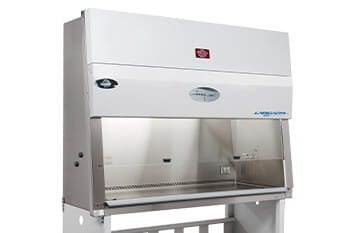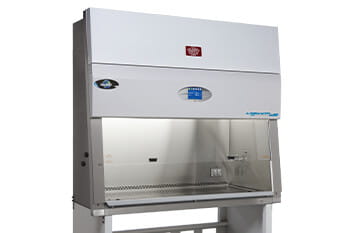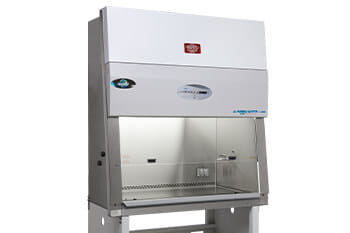Article
Multiple Users in a Class II Biosafety Cabinet
4/19/2024
Whether multiple users can work simultaneously within a Class II biosafety cabinet (BSC) is complex and influenced by safety guidelines and practical workspace considerations. According to the Biosafety in Microbiological and Biomedical Laboratories (BMBL) guidelines, a clear separation of at least 12 inches (305 mm) is recommended to minimize cross-contamination between different materials and activities within the cabinet. This separation is crucial, especially when handling aerosol-generating procedures, which significantly increase the risk of cross-contamination.
Furthermore, the BMBL guidelines highlight the risk posed by volatiles and vapors, which HEPA filters used in BSCs do not retain. These substances can easily create exposure risks between operators, underscoring the need to consider the materials handled concurrently within a shared BSC carefully.
From an operational standpoint, employing proper aseptic techniques ensures product and personnel protection. This includes maintaining rigorous cleaning protocols and ensuring that all operators are thoroughly trained in the procedures specific to a BSC.
Environmental, Health, and Safety (EHS) personnel generally advise against having multiple technicians work inside the same BSC due to the challenges in controlling work practices and ensuring adequate separation between operations. When unavoidable, such as in specific high-throughput environments requiring a 6-foot BSC, the guidelines suggest that the work performed by the technicians should be very similar to reduce the risks associated with cross-contamination. Moreover, strict adherence to established work practices is essential to maintain safety and integrity within the shared workspace.
In summary, while it is technically possible for two technicians to work within a single Class II BSC, it is generally discouraged unless necessary. If multiple users must use the cabinet simultaneously, careful planning and adherence to safety protocols are essential to minimize risks. This approach ensures that personnel and product protection is maintained, aligning with the overarching goals of biosafety in laboratory environments.



